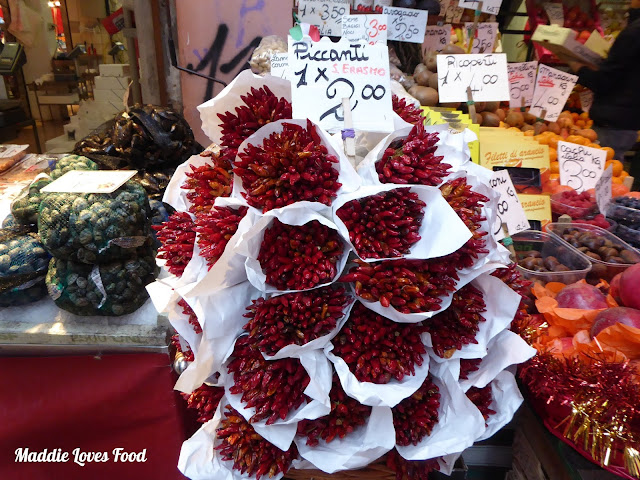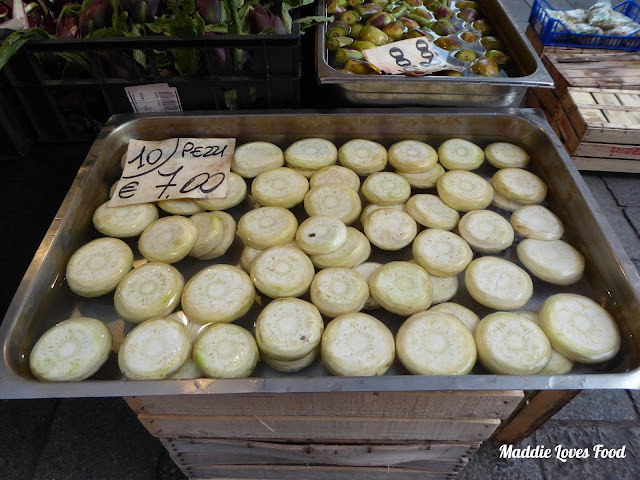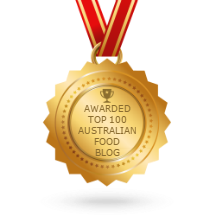Exploring Venice, Murano + the colourful island of Burano
Friday, January 20, 2017
Ah, Venice. The city
of water, of masks, of bridges. Is there any other city quite like it?
Built
entirely as a system of canals that link more than 100 islands, perhaps the most
iconic images of Venice are those of romantic bridges arched over blissfully
calm waters, and slim, banana-shaped gondolas.
As part of our
month-long tour of Europe, which also took us to the iconic cities of Rome and Florence, we
spent three days traversing the floating city of Veniceby foot and boat. Here is what we
saw and ate.
Piazza San Marco
St. Mark's Square is Venice's most famous piazza. Having caught the ferry from Venezia Santa Lucia Station to San Marco, we wheeled our luggage to our AirBnb and ventured out to explore the area as dusk set in.
The square was even more magnificent and imposing in person than any picture could every portray. It's surrounded on three sides by buildings that served as offices and homes of Venetian officials in the old republic. They're fronted by rows of identical semi-circular arches that resemble tiles adorning the aged, grey stone. It's quite spectacular.
At the eastern side of the piazza is St. Mark's Church, which is neighboured by the Palazzo Ducale, or Doge's Palace, to the right. The palace, once the seat of the Venetian Government and home to the Doge, or most senior elected official of Venice, exists as one of the hallmarks of Gothic architecture in Italy.
This was followed, naturally, by a lazy walk down the promenade next to the Palace, which looks out to the Venetian Lagoon, and the Adriatic Sea beyond. Here is the place where you'll find the most number of gondola vendors, who will vy for you to take a ride on one of their iconic paddle boats.
Osteria alla Staffa
We ate dinner on our first night at Osteria alla Staffa, a small, rustic Italian restaurant which we'd come across on Tripadvisor.

It only seats about 25 diners, and is a true, locally-run Italian osteria. As Venice is famous for its seafood, being surrounded by water, we browsed the menu and all we went for the seafood dishes.
Spaghetti con nero seppie
This was the one dish I had my heart set on eating ever since we set foot in Venice. It was spaghetti with squid ink; a rustic tangle of al dente spaghetti coated a thick, rustic dark sauce. Hidden among the jet black ropes of pasta were large, tender cuttlefish pieces. It doesn't look very attractive (not the mention the black remnants of sauce that tend to end up all over your mouth and lips..), but was absolutely divine.

Spaghetti alle vongole
A classic spaghetti with vongole was so simple and utterly delicious. There was a lot of vongole dispersed throughout the pasta, which was coated in a light, oil-based sauce infused with the sweet flavour of the clams.
Pasticcio con scampi
Pasticcio is a baked pasta dish typically made with short pasta shapes. Here, they're replaced with soft, delicate strands of spaghetti. The pasta was baked in a white sauce laden with cream, cheese and a hint of tomato, which gave it a nice rosy colour and sweet flavour.

It arrived bubbling hot from the oven; the flavour of the scampi in the sauce noticeable, but subtle.
Spaghetti alle scaloppine e carciofo
Dad said this was the best pasta he'd ever had. It consisted of spaghetti tossed with scallops, cherry tomatoes and artichokes in a light seafood oil. As with the other pastas, this sung of the flavours of the sea. We struggle to figure out how it is that this pasta dish sounds and looks so simple, yet tastes so extraordinary. 
In addition to our pasta, we also ordered grilled baby calamari, which came in a thick, 'Venetian-style' seafood sauce with batons of zucchini and cherry tomatoes. A drizzle of balsamic added an uncanny sweet dimension that we weren't not quite sure was necessary flavour-wise.

Not quite knowing what fish this was when we ordered it, we take a bite to find it was skate - a firm, slightly sweet fish with a very unique, gummy-like texture. It was almost disguised as a vegetable, as it had been diced into the same sized pieces as the accompanying zucchini, potato, tomato and olives. This reminded me of a seafood-like caponata-cross-ratatouille, only with more of a fish-based sauce.

This bread basket served at the start of our meal was probably one of the most amusing bread baskets we had on the trip.
Tiramisu
And, to finish, tiramisu. Because, of course, we were in Italy.
Mercato di Rialto
The following morning, we ventured out at 9am to visit the Rialto markets, which were located at the Pescaria on the grand canal.
This was where all of the local restaurants and residence purchased their fresh fruit, vegetables and seafood. As soon as we arrived we were caught up in the lively buzzing atmosphere. We watch and wander about as vendors unpack their fresh produce and live fish are heaved off nearby trawler boats which had just arrived back from sea.

Local sun-dried tomatoes

Chilli flowers
These chilli bunches were so beautiful that they could almost be mistaken for a bunch of tiny, red flowers. It's just not a sight you'd see in Sydney.

Fresh cuttlefish - ink and all!
At the heart of the Pescaria was an undercover area dedicated to all things from the sea. There sat every kind of seafood you could imagine - clams, scallops, fresh tuna, cuttlefish, prawns, sardines - all of which had been brought in fresh from the fishing boats that morning.
Fresh tuna cutlets
Scallops in the shell
Razor clams
There was so much to see, and all of it so vibrant and fresh. The sheer abundance and variety of food sold at the markets was amazing - no wonder it's so easy for locals to duck out each morning to buy everything they need for the day.
Whole swordfish
Wharves next to the Pescaria
Cruising the canals
Of course, when in Venice it would be a crime not to explore the maze of canals that the city is famous for. Doing this in a gondola or small boat allows you to experience the city from a whole other perspective.
The Grand Canal
The Grand Canal is one of Venice's main water traffic channels. Gondolas, private boats and vaporetti (water taxis) can be found all the way down the canal, which is lined on both sides with the most beautiful Venetian buildings.
But, the smaller, more narrow canals provide respite from the busier waterways. These are calm, quiet channels, many of which are home to private boats moored next to the homes of local residents. Imagine having a boat to ferry you around each day instead of a car! It's a uniquely Venetian lifestyle.

Gorgeous, iron-railed bridges perch above the still waters. They're old and ageing, but charming nevertheless.

The water on the lagoon is choppier, windier; the sea breeze more clear and fresh.

As is the norm in Italy, each morning we'd eat breakfast standing up at a tiny coffee and pastry shop. We delighted in sipping strong cappuccinos while nibbling on the freshest apple pastries and crema-filled doughnuts.
Caffe latte
Murano: the Island of Glass
After a day of exploring Venice, we embarked on a ferry ride to the nearby island of Murano, which is famous for it's handmade glassware. It's a popular day trip among tourists, and is easily accessible by vaporetto. The ride takes about 10 minutes if you travel on line number 12 from Fondamente nove.

It's a charming island, with one main shopping strip that is split into two by a wide canal. On both sides of the water is a long stretch of glassware shops, which showcase the island's specialty products. The glass is formed into so many different objects which are fantastic as souvenirs - earrings, tiled glass necklaces, bowls and vases, and miniature ornaments which often feature fish suspended in different casings. We purchase a dimpled beer mug and tiny blue fish bowl, both of which are roughly the size of a walnut and feature a small orange fish which has been moulded inside.
We also visited a glass factory, which made exquisite glass sculptures, tableware and other decorative homewares. There, we toured the open workroom where we were able to watch as silica sand was melted in a blasting hot furnace, then stretched, rolled and moulded into the most extraordinary and wonderful shapes.
As with most other crafts, it takes years of training to become a glass master. Apprentices can train for up to ten years to attain this title, and it really is a skill that is developed over time.

Throughout the moulding process, the glass is periodically dipped into a careful arrangement of mosaic beads, which give the desired colours to the finished product. They leak their colour into the clear, toffee-like mixture before it sets and cools.
Burano: the Island of Colour
If you go to Venice, you absolutely must visit Burano, which is a further 25-30 minute vaporetto ride from Murano. Burano is perhaps now as known as its glass-making neighbour island, and is a whole world away from the metropolis of Venice.
There is not a whole lot to do on the small island, but there is a lot to see. As soon as you hop off the ferry and onto the wharf, you'll find rows and rows of cute, brightly-coloured houses that look as if they could pass as toy doll houses.
Each house has it's own character, despite being more or less of the same size, build and configuration as every other house around it. We spend a good couple of hours wandering through the streets. It's easy to forget that these are actually people's houses, and not just display homes for tourists to hang around and take pictures of.

People dream of visiting Venice. It has that cult status as a city that one must see at least once in their lifetime. And rightly so, it's a goregous, culture-rich city that is a joy to explore. But it's not just Venice that is worth a trip - Murano and Burano are must-visits when you go to Venice.
One of the perks of visiting in Winter, as we did, was that it didn't smell (as I'd heard from other people before I left Sydney), nor were there too many tourists, or bad weather. It was quaint, (relatively) quiet, and the weather was ideal for wandering around the canals and small streets.
This was the last city we travelled to on the Italian leg of our European trip. Next stop, Paris!










































0 comments